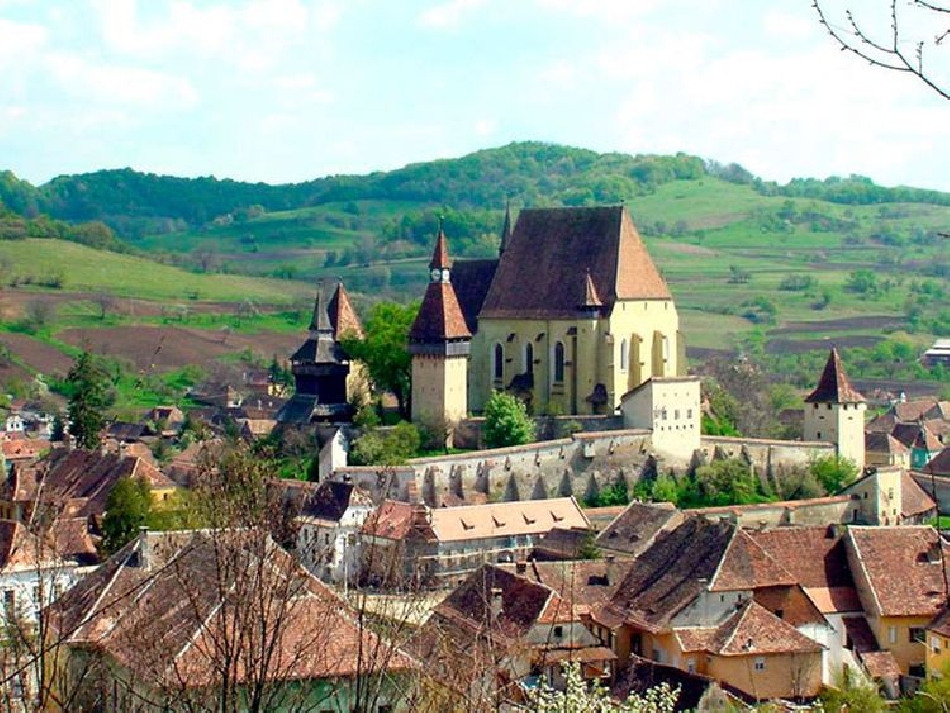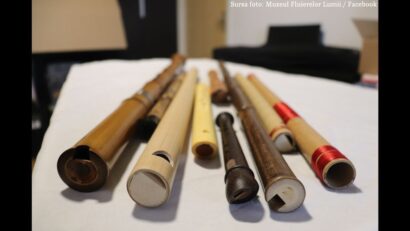Biertan
A UNESCO world heritage sites, Biertan is one of the most interesting Saxon villages in Transylvania.

Christine Leșcu, 28.09.2013, 13:55
Biertan is one of the towns founded by the Saxons in Transylvania. Located 80 km east of Sibiu and around 20 km from Sighisoara and Medias, Biertan was first mentioned in historical records in 1283. An art historian at the National Institute for Heritage, Adriana Stroe tells us more about the history of Biertan.
Adriana Stroe: ”1572 is an important date for the role Biertan would play among the towns founded by the Saxons in Transylvania. This is the year when Biertan’s pastor was elected bishop of the Lutheran Church and for nearly three centuries the town was at the heart of the Transylvanian Saxons’ spiritual and political life. Another event, this time crucial for Biertan’s architecture occurred in late 18th century, when as a result of a series of imperial edicts, the Romanians, the Hungarians and the Rroma population were granted the right to build their own churches and homes in Saxon settlements. This led to the emergence of the Romanian quarters, which revolved around the Orthodox church, and the Rroma quarters, lying at both edges of the two main streets in the town.”
Biertan lies in a hilly era, which is perfect for vine growing. When the Saxons settled here, the area came to be known as ‘”Weinland”, which means “wine land” in German. In terms of occupation, the inhabitants of Biertan were farmers, vine growers and cattle breeders. Adriana Stroe tells us how these occupations influenced the architecture of their houses.
Adriana Stroe: ”The village has two main streets running along the terraces formed by the stream crossing the settlement, on either side of the hill where the fortified church lies. North of the church lies the main square, where you can find the Town Hall, the school, the former community hall, the former inn, the former Evangelical orphanage and the Evangelical parish house. The fact that the town’s main buildings are located close to the Evangelical church is typical of Transylvania’s Saxon villages. Many few houses in Biertan date from the late 18th century and the beginning of the 19th century, while in the main square and its neighbouring areas, parts of the house there date from the 16th and the 17th centuries. A typical feature of the houses in Biertan is that their cellars are on the same level as the main house and have access into the street, which allows wine barrels to be handled and transported easier. The ground floor is usually quite high, and a tall fence surrounds every house. You can still see in Biertan, more than in other villages in the region, façades with oval skylights and medallions of a Baroque influence. You can also see baroque elements inside the houses, with the vaulted rooms and the stucco decorations of the ceilings creating an alternative image to the austerity and pragmatism found in other Saxon settlements.”
Presiding over Biertan from the top of the hill is the fortified church, an architectural element typical of Transylvania’s Saxon town and villages. With details, here is Adriana Stroe again.
Adriana Stroe: ”The church was built on the site of a previous church founded in 1402. Only the choir and the hall dating from the first quarter of the 16th century and a triumphant arch dating from 1522 were preserved of the old church. The second half of the 18th century saw the start of restoration works, as can be seen from the Baroque elements on the inside. The surrounding wall, built on an older wall, dates from 1468. The fortification was extended during the 16th century. The church is a late Gothic church. Worth noting are its doors, especially the Western door with its middle pillar richly adorned and featuring the coat-of-arm of King Wladislaw II and Governor Ioan Zapolya, as well as the door of the vestry dating from 1515, with its Renaissance elements. On the inside, the church preserves some of the original features, such as the sanctuary and the lectern, the work of Johannes Reichmuth from the neighbouring Sighisoara; the pulpit built in the Gothic style with Renaissance elements made by Ulrich from Brasov; and the inlaid door of the vestry with its ingenious lock. The church is surrounded by two concentric fortified walls, as well as a third wall that partially surrounds the church along the western, southern and eastern side. The fortified wall has four towers and a bastion, which can still be seen today. The southern tower is known as the Catholics’ Tower and features mural paintings dating from the 16th century, while the north-eastern tower is home to the tombstones of some of the pastors and bishops who performed the divine service in Biertan.”
Today, Biertan has the status of a heritage site and was included on UNESCO’s World Heritage List. With the massive migration of the Saxon population in the 1970s, the village began to lose some of its authenticity. Recently, however, restoration works have begun on some of its house through traditional methods.





























